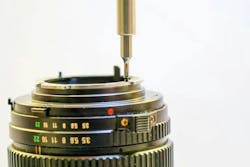What are the 5 stages of Optical Reverse Engineering?
The 5 Stages of Optical Reverse Engineering
Optical reverse engineering involves a meticulous process to replicate and analyze existing optical components or systems, allowing for customization, replication of advanced designs, and improvements. These five key stages encompass the process:
- Sample Evaluation: The initial step involves acquiring a sample of the optical component or system in question. Skilled engineers at Shanghai Optics meticulously assess the sample, capturing precise and detailed measurements through non-destructive methods. This ensures that the original item remains intact while providing accurate digital data.
- Model Generation: The collected measurements are then transformed into a high-quality computer-aided design (CAD) model or optical drawing. Shanghai Optics’s engineers employ industry-leading software to create a detailed representation of the object, capturing its geometry, dimensions, and intricate details.
- Analysis and Optimization: Once the CAD model is generated, a comprehensive analysis is conducted to gain a deep understanding of the component or assembly design. This analysis allows for the identification of areas that can be enhanced and optimized, based on specific requirements, such as reducing chromatic aberration or improving the focal point.
- Prototyping and Manufacturing: With the finalized CAD model in hand, Shanghai Optics can proceed to the prototyping and manufacturing phase. Whether you require a functional prototype for testing or a fully manufactured component, advanced manufacturing technologies are utilized to deliver high-quality results, saving both time and cost compared to creating a design from scratch.
- Quality Assurance: Quality control measures are diligently maintained throughout the reverse engineering process to ensure the accuracy and reliability of the replicated component or system. Rigorous inspection methods and validation procedures are employed to verify that the recreated item aligns with your specific specifications.
Enhancing Designs and Replicating Diverse Optical Systems
Reverse optical engineering not only enables manufacturers to replicate optical systems but also empowers them to enhance existing designs. For instance, a critical aspect involves scrutinizing the blueprint of an incumbent optical system and pinpointing areas ripe for refinement. These improvements could encompass reducing chromatic aberration or fine-tuning the focal point, resulting in a more efficient and potent end product.
Regarding its specific capabilities, reverse optical engineering possesses the prowess to replicate a diverse spectrum of optical components and systems, spanning from plano concave lenses to cylindrical lenses and various other lens types. Furthermore, manufacturers have the flexibility to select from a wide array of lens materials, aligning with the precise requirements of the applications.
At its core, reverse optical engineering leans on a distinct suite of manufacturing competencies. Among these, a pivotal capability involves the proficiency to dissect and recreate the intricate behavior of light rays as we traverse an optical system. This necessitates a profound understanding of optical design principles and the adept use of specialized software and equipment.
Moreover, manufacturing capabilities extend to the creation of intricate optical components using various techniques, such as precision diamond turning and injection molding. These methods afford manufacturers the ability to fabricate components with exceptional precision, accuracy, and repeatability.
In summation, reverse optical engineering stands as a valuable method for crafting bespoke optical solutions and elevating existing optical systems. It empowers manufacturers to replicate cutting-edge designs and enact refinements within incumbent systems, leading to the production of more effective and efficient optical products. Armed with its unique set of manufacturing capabilities, reverse optical engineering offers a cost-effective avenue for fashioning tailored optical components and systems that align precisely with manufacturers’ distinct needs.
Do not hesitate to contact Shanghai Optics today. We’d be more than happy to discuss your projects and how best they can become a success.
